The truth about what is compostable plastics and what is biodegradable plastics, is a complex area with lots of misleading information and contradictory advice. It is important to understand the basic differences between these terms and types of plastic, so that you can make informed decisions on product purchases.
At the end of the day, you want to know what the environmental impact is that you might have.:
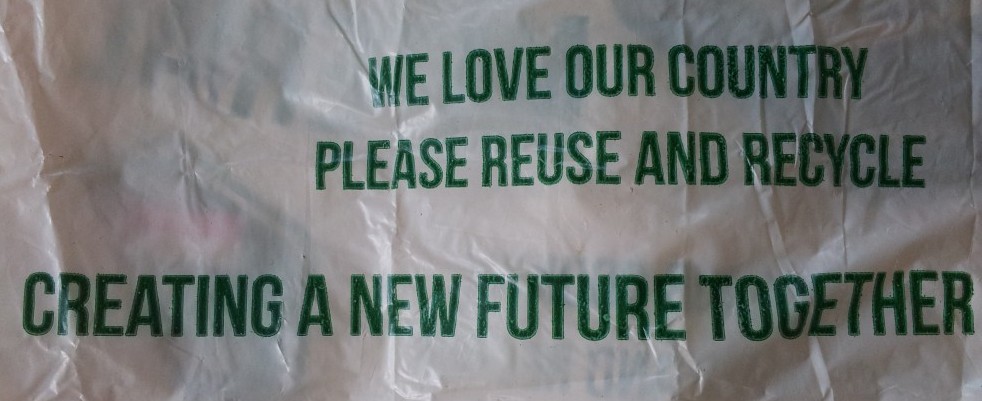
So let’s at first have a look at the different types of plastics.
The Difference Between Compostable and Biodegradable
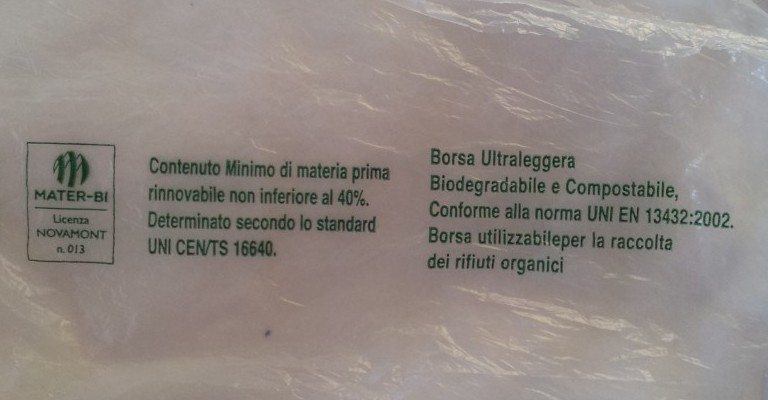 There is a lot of confusion surrounding the use of the terms biodegradable and compostable. Biodegradable and compostable plastics are often lumped together, but there are differences.
There is a lot of confusion surrounding the use of the terms biodegradable and compostable. Biodegradable and compostable plastics are often lumped together, but there are differences.
- Biodegrading is a natural breakdown of materials by microorganisms.
- Composting is a biodegradation process that is controlled by humans. It adds beneficial microorganisms, called humus, back into the soil. So human intervention speeds up the process. Composting can be done at home or on a commercial basis.
It is important to understand the differences, so that disposal can be done properly and efficiently.
The Stages of Biodegradation:
The definition of Biodegradable is a substance or object that can decompose, or is capable of being broken down. This is through the action of microorganisms, such as bacteria and fungi. Substances include food scraps, wool, wood, cotton, human and animal waste, as well as manufactured products based on natural materials, such as paper and vegetable-based soaps.
According to Wikipedia, there are the three stages of biodegradation namely bio-deterioration, bio-fragmentation and assimilation.
- Bio-deterioration is surface level degradation that changes the physical, mechanical and chemical properties of the material. It causes weakening of the structure of the material. It included corrosion of metals, deterioration of stone facades of buildings, or the aesthetic changes of man-made structures by living organisms. Bio-deterioration is the first stage of biodegradation, but it can also run parallel with bio-fragmentation.
- Bio-fragmentation (of a polymer): there are two types – with or without oxygen.
- with oxygen in the system, the breakdown is aerobic digestion,
- without oxygen it is anaerobic digestion. Both these reactions produce carbon dioxide, water, residue and a new biomass, but anaerobic digestion also produces methane, which is a natural gas. Aerobic digestion is quicker than anaerobic digestion, but anaerobic digestion is better in reducing the mass and volume of material. Anaerobic digestion technology is used in waste management systems and as a source of local renewable energy.
- Assimilation stage is when products from bio-fragmentation are integrated into microbial cells.
So What is Biodegradable Plastics?
Biodegradable plastic refers to a material that maintains its mechanical strength during practical use, but break down after their use, into non-toxic byproducts. Breakdown happens through microorganisms attacking the material. Plastics biodegrade at different rates. PVC resists biodegradation, so it is used in plumbing and sewerage systems.
Biodegradable plastic is commonly produced with renewable raw materials, microorganisms or petrochemicals, or combinations of all three of them.
The idea of biodegradable plastic suggests a plastic that over a period of time, would degrade to nothing or very little. This would pose far less of a hazard to the environment, wildlife and marine life.
When it comes to biodegradable plastic bags, it usually means that the bags are made from a mixture of bio plastics (PLA) and harmful plastics such as Polypropylene, Polyethylene, Polystyrene and PVC.
The breakdown process may be aided by microorganisms like fungi and bacteria. But, it may also have some kind of additive, that helps with degradation.
Unfortunately this means that harmful microplastics will be left in the environment and is likely to pollute the environment.
Biodegradable plastics have a different chemical composition from traditional plastic. This means plastic waste streams have to be separated to ensure high quality recycled plastic products.
Biodegradable plastic products have a very large negative impact on the environment, so it is important that there are standards in place. Demand for biodegradable plastic is soaring, but there is still a huge challenge for existing plastic waste to be converted.
What is Compostable Plastics?
Compostable plastics are derived from renewable materials such as corn,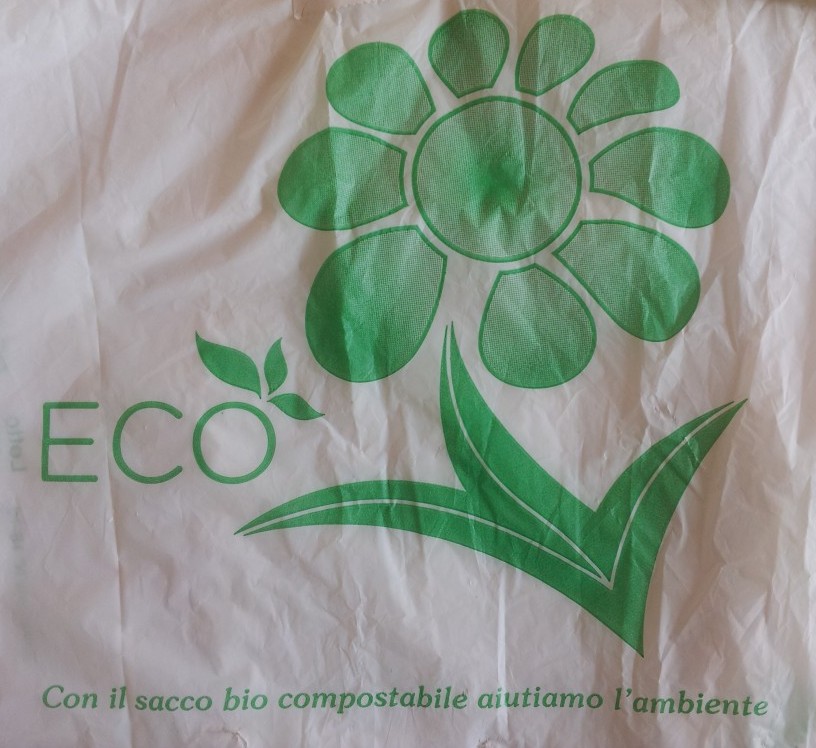 cassava, sugarcane or sugar beet pulp, tapioca and potato starches, soy protein, cellulose and lactic acid. They are made from certified, compostable, natural plant materials in the form of fermented plant starch.
cassava, sugarcane or sugar beet pulp, tapioca and potato starches, soy protein, cellulose and lactic acid. They are made from certified, compostable, natural plant materials in the form of fermented plant starch.
These are often sourced from vegetable and farming industries where these products are waste materials. They are commonly referred to as PLA (Polylactic acid or polylactide), which is a thermoplastic aliphatic polyester made from renewable biomass.
Compostable plastics are non-toxic and when composted, decompose into water, carbon dioxide and biomass. As these products are free from harmful plastics, they break down to their natural cellulose beginnings. Thus, leaving virtually undetectable levels in the soil.
Because there are no microplastic residues that are left behind, the soil is regarded as “worm safe”.
Starch based plastic will degrade after two to four months in a compost bin, whereas polylactic acid (PLA) requires high temperatures to break down. There are several factors that affect the process, including water, light, oxygen and temperature.
Compostable containers for buying take-away food and storing leftovers, leave a much smaller carbon footprint than non-recyclable plastics.
What About Degradable Plastics?
Generally, degradable simply means something will in time degrade and almost anything and everything is degradable. When you look at products like bin liners and dog waste disposal bags, most degradable bags and liners are still made from harmful plastics. These would bematerials such as PVC, Polypropylene, Polystyrene and Polyethylene.
However, the degradable plastic bags may be thinner than regular bin liners and bags, or an additive might have been added to aid in degradation.
The time that it takes to break down can be from days, to weeks, to months, to years and even centuries.
But this still means that harmful microplastics will be left in the environment and it is most likely these will find their way into the water system and food chain.
Requirements For Compostable Plastics
The term composting is used casually to refer to biodegradation of packaging materials. The European Union has these requirements to be classified as a compostable plastic: 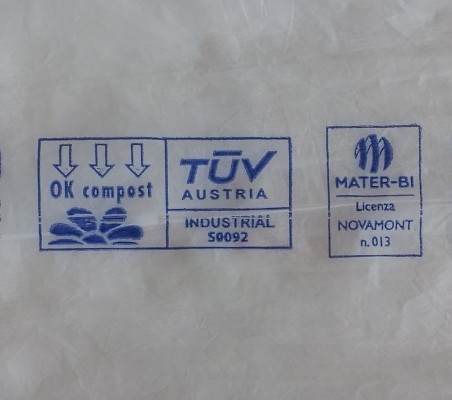
- Biodegradable: the conversion through biological processes of the original material into water, carbon dioxide and minerals. More than ninety percent of the material need to biodegrade within six months.
- Quality: absence of toxic substances and other substances that will slow down or interfere with composting.
- Chemical composition: a very limited amount of volatile matter, heavy metals and fluorine must be present.
- Ability to disintegrate: at least ninety percent of the original mass should decompose into particles that are smaller than 2 mm by 2 mm.
Compostable bio-plastics (like cutlery and straws) can only be broken down in an industrial composting facility. So it is a bit misleading, as you cannot just put it into any compost bin or compost it at home.
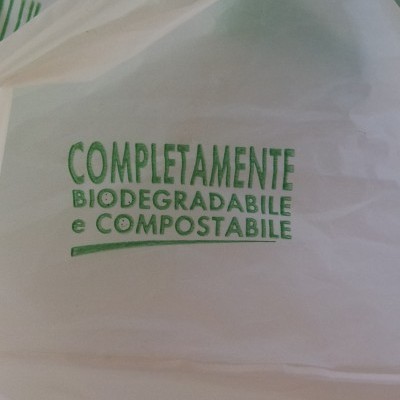
- Compostable plastics are made from polylactic acid (PLA) material which is derived from plants., so NO toxic materials are used.
- You cannot compost it at home, only in industrial facilities. Why?
- Compostable plastic is broken down by microorganisms, but only in an environment of over 50°C. Traditional home compost piles don’t consistently reach the temperatures that are high enough, whereas industrial composting facilities do.
- Also, industrial composting facilities can ensure that no toxic reside is left behind.
- Compostable utensils (cutlery, straws etc.) must not be put into normal rubbish, as it needs specific conditions to degrade. If you put it in the rubbish bin, it goes to landfill and won’t get composted.
- Also don’t put compostable plastic into recycling. That is because they are made of a different composition compared to traditional plastics that can be recycled.
Compostable plastics need to go in a special bin for bio-waste and you local council needs to be part of the composting scheme.
Plastic pollution poses health risks to animals, wildlife and sea life. Specially slowly degrading plastics, metals, detergents and other pollutants created by humans.
Compostable vs Degradable or Biodegradable?
To be frank, certified compostable plastic is the only option of these three plastics that breaks down into natural components and does not have a harmful impact on the environment.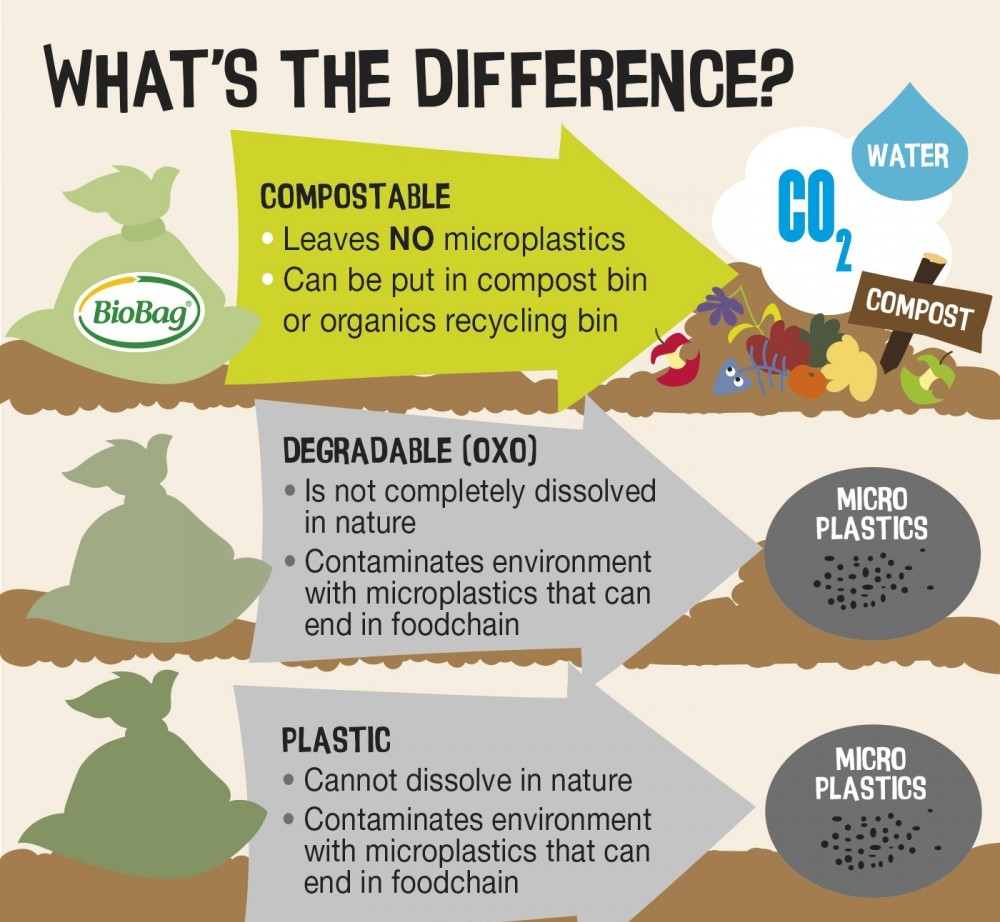
Compostable is not the same as biodegradable. The biggest difference is the toxic residue and the time that it takes to degrade. PLA breaks down into water, carbon dioxide and biomass within three months. This happens under specific conditions of humidity, temperature and time.
Microorganisms and enzymes can also degrade biodegradable plastic in natural conditions. This will convert plastic into carbon dioxide, water, methane and biomass, but there is no time frame or legal requirement around toxic residue. This means it can take years, possibly hundreds, to actually degrade and toxic chemicals could potentially leak into the ecosystem.
Sometimes these terms can be very confusing as they are used interchangeably. When used in a commercial setting, it can be what is referred to as “green-washing”. Green- washing is where it is claimed that, just because a product is labeled as eco friendly or bio, that it is good for the environment, when it is often not.
What Is The Bottom Line?
The bottom line is that both biodegradable (including oxo-degradable)  and degradable plastics are still made with harmful plastics. Although they are designed to break down faster, it will merely break down into smaller plastics, that will still exist and pollute our environment indefinitely.
and degradable plastics are still made with harmful plastics. Although they are designed to break down faster, it will merely break down into smaller plastics, that will still exist and pollute our environment indefinitely.
Compostable plastic is a fantastic initiative, but the infrastructure in many areas are sadly not yet ready to deal with it. I say not yet, because a lot of progress is being made on a regular basis.
If you recycle plastic, paper, aluminum and glass, and separate your waste completely, and compost any “wet” food waste, you might not need a bin liner at all.
Ultimately, the best option for the environment is not using any bin liner, but that is not always possible. So if you do need to use a bin liner, then make sure the plastic is certified 100% compostable.
More related reading:
- What is wheat straw plastic?
- What is corn starch plastic?
- My plastic free life.
- What is recycled plastic used for?
I hope this has answered your questions about what is compostable plastics and what is biodegradable plastics, but if you do have any comments or suggestions, please leave them below.

Although I had some little clues about what these two terms are, I never really understood what they meant and their impacts on our environment and atmosphere. So the Biodegrading is a natural breakdown of materials by microorganisms while Composting is a biodegradation process that is controlled by humans. This simply means one is done by nature and one is artificially carried out. This post is so educational. Thanks for posting it.
You’re welcome. Compostable plastic will degrade far quicker than biodegradable if under the correct conditions.
Hi Liné Cowley. Thank you so much for sharing this article describing what Compostable and Biodegradable Plastics are and their environmental impacts too I must admit that I have learnt a lot from this post regarding what compostable and biodegradable plastics are. Now I can make well informed decisions on product purchases regarding plastics 😄
You did a really nice job.
I am pleased that you found the post informative and helpful
Hey there!
Are you from the European Union? You mentioned an E.U. rule concerning these plastics.
I am from EEUU too (more exactly from Romania), but still having not heard about compostable plastics around here yet.
Since compostables cannot be recycled, their usage is preferrable over the plastic-leaving biodegradables, right because they don’t “provide” any damaging remainders to he environment. However, I guess there has to pass some time before compostable and recyclable plastics will be the only kinds of plastics in our households.
Hi Peter, yes I live in Italy and since January this year, 2019, we have to pay for all the “compostable” plastic bags. These range from the produce bags to shopping bags, although we’ve had to pay for shopping bags for a long time. But although I do as much as possible at home with making my own compost, Italy, and specifically Rome, is just not up to speed
Hello,
Thank you, four such an informed article. I honestly never heard of biodegradable or compostable plastic, I just thought all plastic was bad and impact on the environment.
Reading this I even realized I was recycling wrong, I try to stay away from buying a lot of plastic, but it’s hard when everything is in some type of plastic container or wrapper. And the grocery stores puts all your items in plastic bags even a kids toy can be made of plastic.
The big companies are not using compostable plastics, So how can we as a consumer help more, What are the steps I should take to lessen the harmful impact on the earth?
Hi Wes, I think the first thing we as consumer can do is not to buy anything that is packaged in plastic. And if it is packed in plastic, then unwrap it at the checkout when you pay for it and leave it to the store to recycle. That way they might get the message from you as a consumer that you don’t want plastic
So in other word our only hope for the future to sustain our healthy world we need to only manufacture combustible plastics. Am I correct in saying this?
We need to only produce plastics that can be broken down in their entirety to avoid further contamination of our beautiful planet. So why aren’t companies coming to the party on this? We really need to all start taking a stronger stance on things like this in order to make sure our planet is around for future generations to enjoy.
I agree with you that companies need to take a stronger stance, but they will only do so if we as consumers, demand the change.